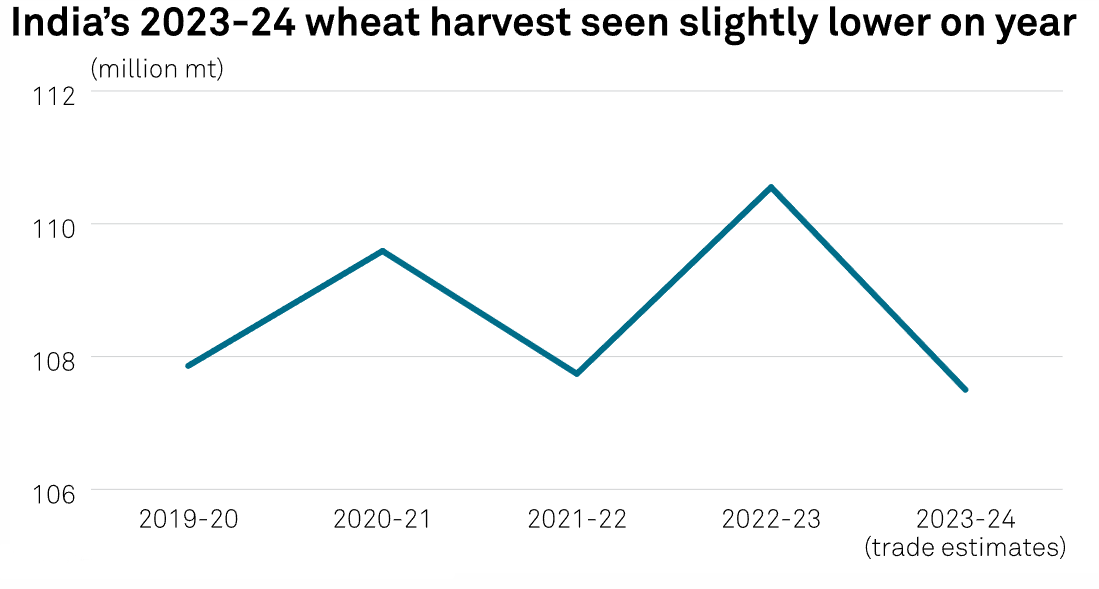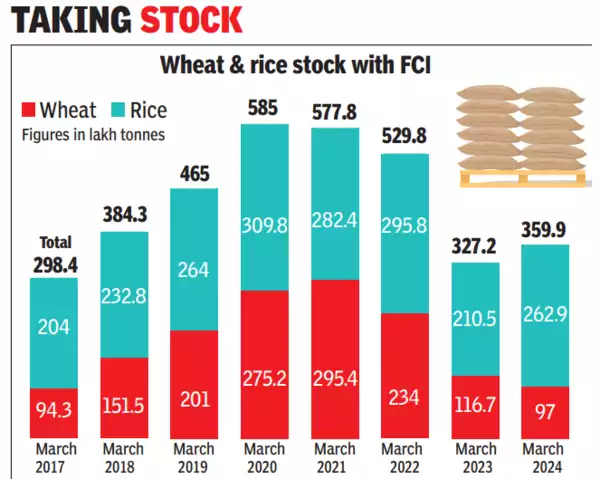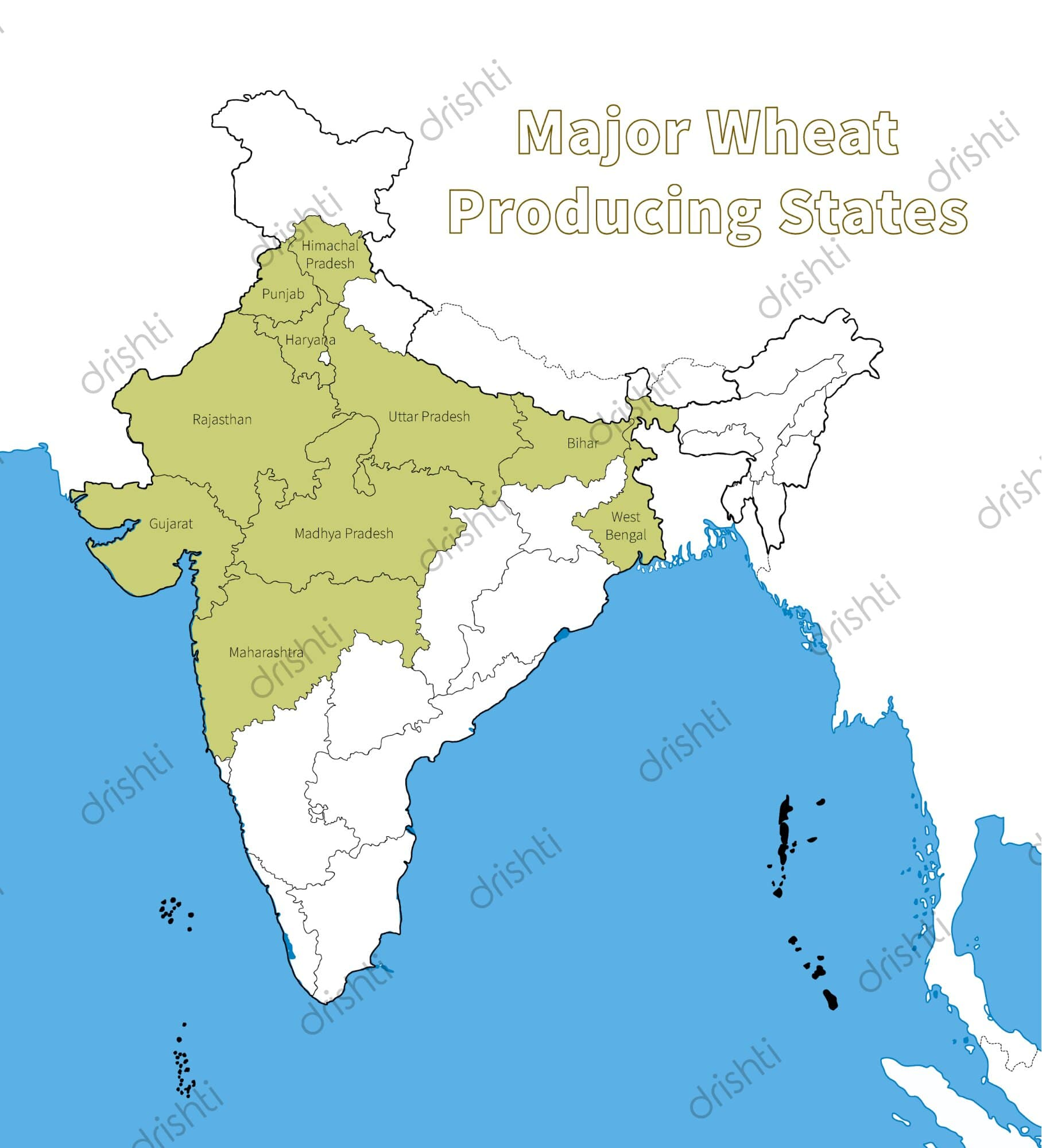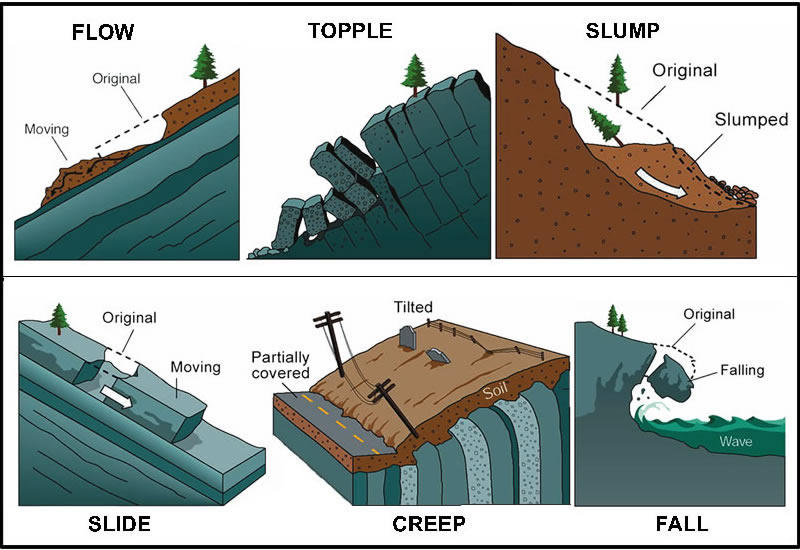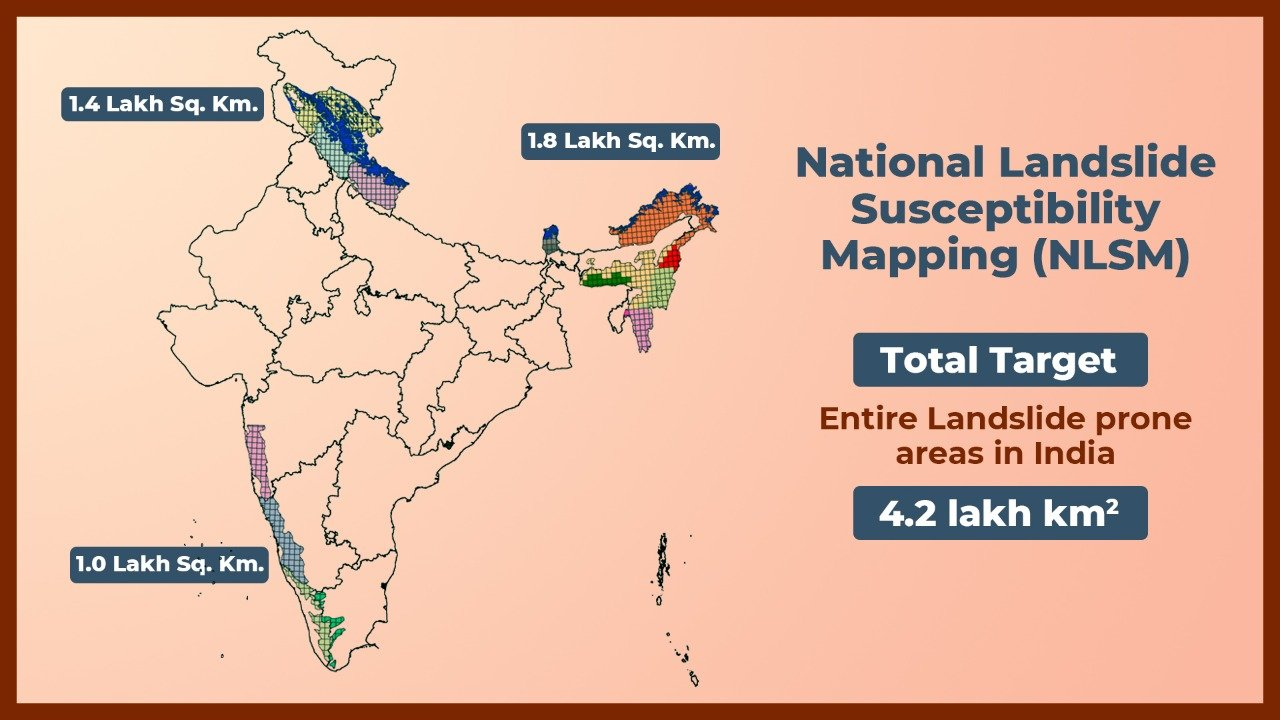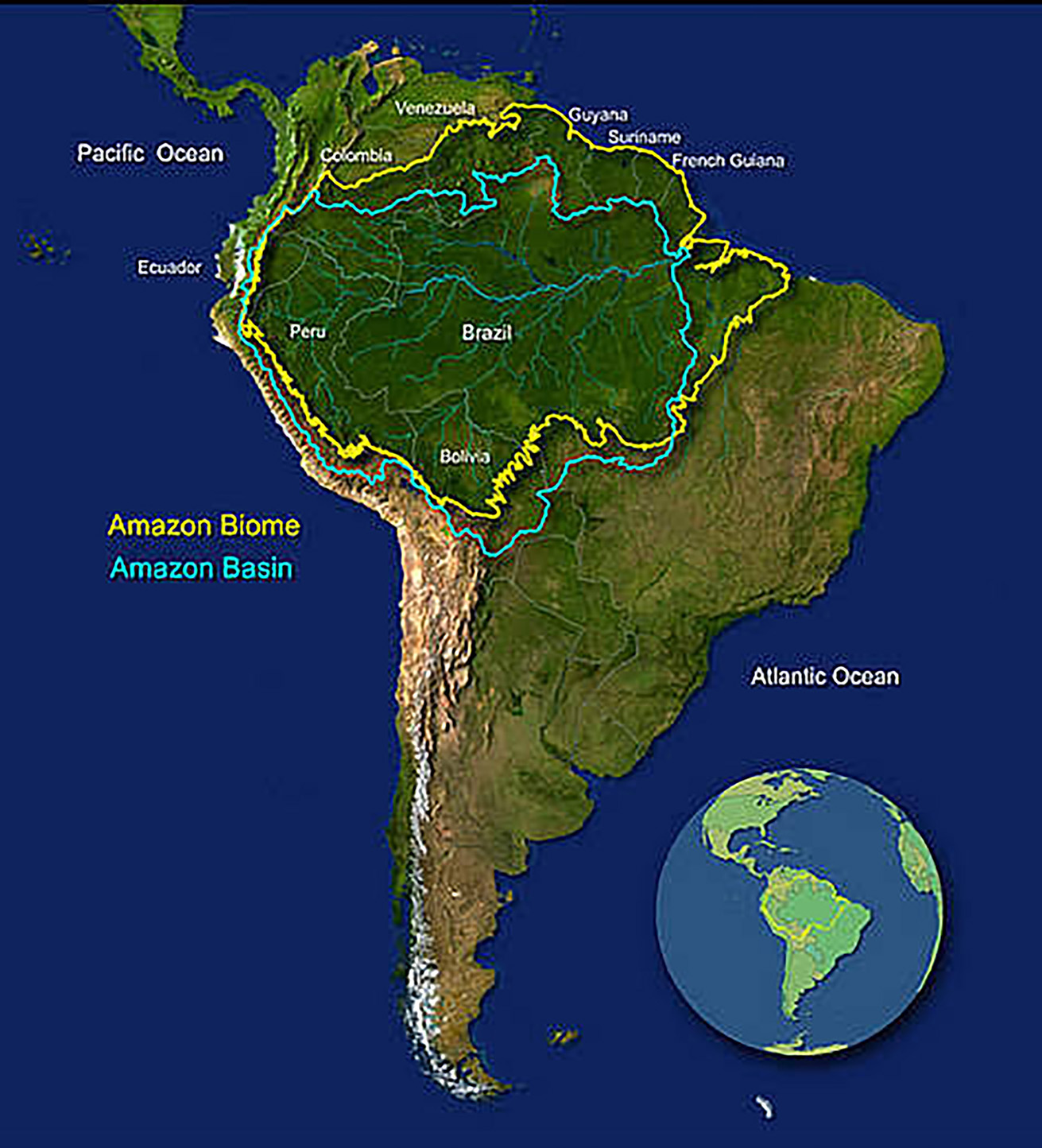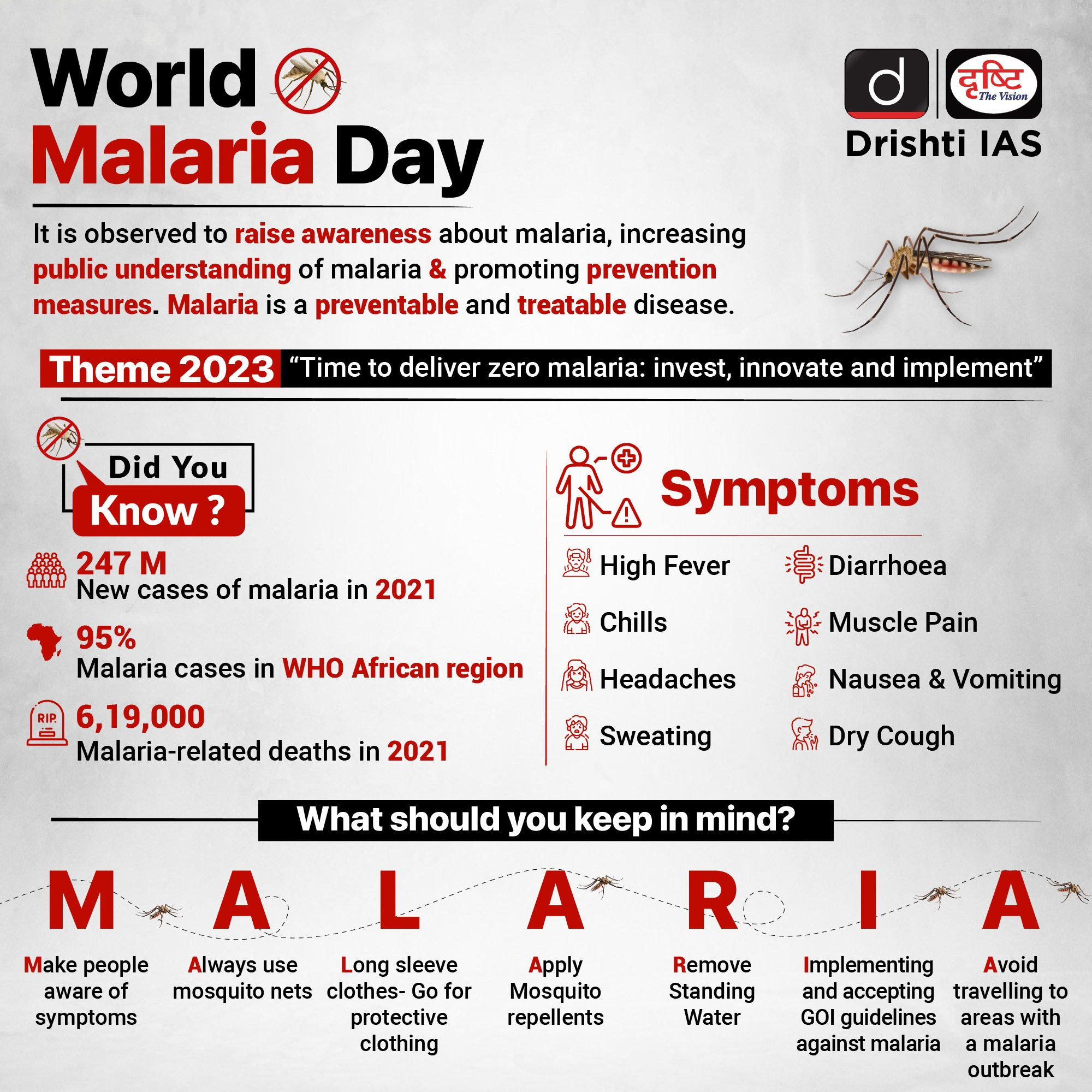Indian Economy
WIPO Treaty Protecting Genetic Resources and Traditional Knowledge
For Prelims: World Intellectual Property Organization, Intellectual property rights, Biopiracy, Ayurveda, GI Tag, Trademarks
For Mains: Issues relating to Intellectual Property Rights, Protection of biodiversity and traditional wisdom, Indian genetic resources and associated traditional knowledge
Why in News?
The recently concluded World Intellectual Property Organization (WIPO) treaty on Intellectual Property (IP), Genetic Resources (GRs), and Associated Traditional Knowledge (ATK) is a significant win for countries of the global South including India.
- The treaty has been adopted at a multilateral forum with a consensus among more than 150 countries, including the majority of the developed economies.
What is the Significance of the WIPO Treaty?
-
Inscription of TK and Wisdom into the Global IP System: The treaty marks the first time that traditional knowledge and wisdom systems are being inscribed into the global intellectual property (IP) system.
-
The treaty sets unprecedented global standards within the IP system for provider countries of GRs and ATK.
-
- Protection of Biodiversity: The WIPO Treaty aims to balance the rights of countries rich in biodiversity and traditional wisdom with the global Intellectual Property Rights (IPR) system.
- Inclusive Innovation: It promotes inclusive innovation by recognising the connection between local communities and their GRs and ATK.
- The treaty protects the wealth of traditional knowledge on medicinal plants, agriculture, and other aspects of life, passed down through generations, from misappropriation.
- The treaty protects the wealth of traditional knowledge on medicinal plants, agriculture, and other aspects of life, passed down through generations, from misappropriation.
- Disclosure Requirements: The treaty will require contracting parties to put in place mandatory disclosure obligations for patent applicants to disclose the country of origin or source of the genetic resources when the claimed invention is based on genetic resources or associated traditional knowledge.
-
The WIPO Treaty helps combat biopiracy by establishing a legal framework to protect GRs and traditional knowledge from unauthorised commercial exploitation.
-
-
Prevention of Misappropriation: The treaty establishes mandatory disclosure obligations, which offer added protection to prevent the misappropriation of GRs and ATK in countries without existing disclosure laws.
-
The recognition is crucial as several traditional herbs and products have been falsely claimed as foreign inventions in the past, leading to contested patent applications.
-
World Intellectual Property Organisation
- It is the global forum for Intellectual Property (IP) services, policy, information and cooperation. It is a self-funding agency of the United Nations, with 193 member states including India.
- Its mission is to lead the development of a balanced and effective international IP system that enables innovation and creativity for the benefit of all.
- WIPO defines Traditional knowledge (TK) as knowledge, know-how, skills and practices that are developed, sustained and passed on from generation to generation within a community, often forming part of its cultural or spiritual identity.
Note
- Genetic resources (GRs) are defined in the Convention on Biological Diversity, 1992 (CBD) as genetic material of plant, animal, microbial or other origin containing functional units of heredity that has actual or potential value.
- Examples include medicinal plants, agricultural crops and animal breeds.
What are the Past Cases Surrounding Traditional Knowledge and Genetic Resources in IPR?
- Traditional Knowledge:
- The Turmeric Case: Turmeric, a tropical herb from India, is widely used in the country for medicinal, culinary, and dye purposes. It is used as a blood purifier, for treating the common cold, and as an antiparasitic for skin infections.
- In 1995, the US issued a patent for using turmeric powder for wound healing to the University of Mississippi Medical Center, but it was later revoked due to prior art evidence provided by the Indian Council for Science and Industrial Research (CSIR).
- The Neem Case: It raised a controversy over a patent granted to a company W.R. Grace for a formulation using the active ingredient azadirachtin from the neem plant.
- Traditional medicine systems like Ayurveda and Unani have long recognised neem's medicinal and pesticide properties.
- However, the patent granted the company exclusive rights to use azadirachtin (extract of fruit from the Neem tree) in a specific storage solution.
- This sparked an outcry and led to re-examination and opposition proceedings at the United States Patent and Trademark Office (USPTO) and the European Patent Office (EPO). While the USPTO upheld the patent, the EPO ultimately ruled against it, stating it lacked innovation.
- The Turmeric Case: Turmeric, a tropical herb from India, is widely used in the country for medicinal, culinary, and dye purposes. It is used as a blood purifier, for treating the common cold, and as an antiparasitic for skin infections.
- Genetic Resources:
- Wheat Varieties Case (2003): The case involves biopiracy of Indian wheat varieties known as Nap Hal and Nap Hal-49, which were patented by a European company claiming to be the inventors.
- Indian authorities intervened and provided evidence that these wheat varieties originally belonged to India, were its natural resources and crop varieties, and were not novel inventions. As a result, the patents were revoked.
- Basmati Rice Case (2000): It involved a US company being granted a patent for Basmati rice by the USPTO.
- The applicants falsely claimed to have invented the new variety, leading to conflict between Indian and American agricultural organisations.
- Eventually, the patent claims were narrowed down when the applicants admitted they didn't invent Basmati rice.
- Wheat Varieties Case (2003): The case involves biopiracy of Indian wheat varieties known as Nap Hal and Nap Hal-49, which were patented by a European company claiming to be the inventors.
What are India’s Initiatives Related to Protecting Traditional Knowledge and Genetic Resources?
- Traditional Knowledge:
- Traditional Knowledge Digital Library:
- The TKDL is a comprehensive database of medicinal formulations in various languages.
- Established in 2001, the TKDL was created in response to India’s challenges in overturning patents on traditional remedies like turmeric and neem.
- This initiative, a joint effort by the CSIR and the Department of AYUSH, aims to safeguard India’s rich medicinal knowledge from being patented erroneously, which was happening at an estimated rate of 2,000 cases per year.
- The TKDL has been pivotal in protecting India’s traditional medicinal systems from misappropriation globally.
- Patents (Amendment) Act, 2005: It aims to protect the rights of indigenous communities by obligating patent applicants to disclose the origin of biological resources in their inventions.
- Failure to disclose this information, especially related to TK, may result in the refusal of the patent.
- Trademark Act, 1999: Trademarks are based on the principles of distinguishability and avoiding confusion. They differentiate goods and prevent confusion about the source of a product.
- The act allows for the protection of agricultural and biological products, including those from indigenous communities.
- Indigenous groups can use trademark registration to differentiate their brand and guarantee unique quality.
- Biological Diversity Act, 2002 :It was enacted to provide for the conservation of biological diversity, sustainable use of its components, and fair and equitable sharing of the benefits arising out of the use of biological resources and traditional knowledge.
- Geographical Indications (GI) : It is a designation applied to products originating from a specific geographical area, indicating that the qualities or reputation of the products are inherently linked to that particular origin.
- Traditional Knowledge Digital Library:
- Genetic Resources:
- National Gene Bank : It was established in 1996 to preserve the seeds of Plant Genetic Resources (PGR) for future generations. It has the capacity to preserve about one million germplasm (living tissue from which new plants can be grown) in the form of seeds.
- Plant Varieties and Farmers’ Rights (PPV&FR) Act, 2001: Plant breeders and farmers providing Plant Genetic Resources (PGR) for developing new varieties should receive a fair share of commercial gains.
- The PPV&FR Act 2001, is the first to include a provision for access and benefit-sharing (ABS) along with Plant Breeder’s Rights (PBRs).
- National Bureau of Plant Genetic Resources (NBPGR): It is an Indian institute working under the Indian Council of Agricultural Research (ICAR). It plays a pivotal role in conserving and protecting the genetic diversity of cultivated plants and their wild relatives in India.
- National Bureau of Animal Genetic Resources (NBAGR): As a part of ICAR, NBAGR aims to conserve, characterise, and utilise animal genetic resources for sustainable livestock development in India. It maintains a genbank repository of the National Bureau of Animal Genetic Resources.
- Microbial and Insect Biodiversity: National Bureau of Agriculturally Important Insects (NBAII) serves as a nodal agency for collection, characterization, documentation, conservation, exchange, and utilisation of agriculturally important insect resources.
International initiatives for Access and Benefit-sharing of GR and TK
- Convention on Biological Diversity
- Nagoya Protocol
- TRIPS agreement
- International Treaty on Plant Genetic Resources for Food and Agriculture
- Commission on Genetic Resources for Food and Agriculture
- UNESCO's Local and Indigenous Knowledge Systems (LINKS): It is an interdisciplinary initiative that promotes indigenous and local knowledge and its meaningful inclusion in environmental policy and action.
|
Drishti Mains Question: Q. Evaluate India's initiatives related to protecting traditional knowledge. How do these initiatives contribute to safeguarding India's rich medicinal knowledge and biodiversity resources? |
UPSC Civil Services Examination, Previous Year Questions (PYQs)
Prelims
Q. With reference to the ‘National Intellectual Property Rights Policy’, consider the following statements: (2017)
- It reiterates India’s commitment to the Doha Development Agenda and the TRIPS Agreement.
- Department of Industrial Policy and Promotion is the nodal agency for regulating intellectual property rights in India.
Which of the above statements is/are correct?
(a) 1 only
(b) 2 only
(c) Both 1 and 2
(d) Neither 1 nor 2
Ans: (c)
Q. Consider the following statements: (2019)
- According to the Indian Patents Act, a biological process to create a seed can be patented in India.
- In India, there is no Intellectual Property Appellate Board.
- Plant varieties are not eligible to be patented in India.
Which of the statements given above is/are correct?
(a) 1 and 3 only
(b) 2 and 3 only
(c) 3 only
(d) 1, 2 and 3
Ans: (c)
Mains
Q. In a globalized world, Intellectual Property Rights assume significance and are a source of litigation. Broadly distinguish between the terms—Copyrights, Patents and Trade Secrets. (2014)
Indian Economy
India to Import Wheat After 6 years
For Prelims: Food inflation, Wheat, Food Crops, Buffers Stocks, Minimum Support Prices.
For Mains: Effects of Weather in Food Production, Foodgrain Security.
Why in News?
India, the world's second-largest wheat producer, plans to begin wheat imports after a six-year gap to replenish depleted reserves and control rising prices, driven by three consecutive years of disappointing crops.
- India is likely to remove a 40% import tax on wheat, allowing private traders to purchase from countries like Russia, though in small quantities.
Why India Decided to Resume Wheat Imports?
- Declining Wheat Production:
- India's wheat production has declined in the last 3 years due to unfavourable weather conditions, leading to a sharp drop in wheat output.
- The government estimates this year's wheat crop to be 6.25% lower than the previous year's (2023) record production of 112 million metric tons.
- Depletion of Wheat Reserves:
- As of April 2024, wheat stocks in government warehouses have dropped to 7.5 million tons, the lowest in 16 years, due to the government selling over 10 million tons from its reserves to control domestic prices.
- Shortfall in Wheat Procurement by Government:
- The government's target for wheat procurement the year 2024 was 30-32 million metric tons, but it has managed to buy only 26.2 million tons so far.
- Surge in Domestic Wheat Prices:
- Domestic wheat prices have stayed above the government's minimum support price (MSP) of 2,275 rupees per 100 kg and have been on the rise recently.
- So, the government decided to remove the 40% import duty on wheat to allow private traders and flour millers to import wheat, primarily from Russia.
- Domestic wheat prices have stayed above the government's minimum support price (MSP) of 2,275 rupees per 100 kg and have been on the rise recently.
What are the Possible Implications of the Decision?
- Domestic Market:
- Enhanced Availability and Price Stability: Abolishing import duty will likely lead to increased wheat supplies in the domestic market. This can potentially mitigate price hikes.
- Replenishing Strategic Reserves: Lower import costs can aid the government in replenishing depleted wheat reserves. This bolsters food security by creating a buffer against unforeseen disruptions in domestic production.
- Global Market:
- Potential Upward Price Pressure: While India's estimated import volume (3-5 million metric tons) is modest, it could contribute to a rise in global wheat prices.
- This is due to the current scenario of high prices driven by production concerns in major exporting nations like Russia.
- Limited Overall Impact: India's import requirement is unlikely to significantly influence the global market. Larger players will continue to exert a more substantial influence on global wheat price trends.
- Potential Upward Price Pressure: While India's estimated import volume (3-5 million metric tons) is modest, it could contribute to a rise in global wheat prices.
Food Corporation of India (FCI)
- It is a statutory body established under the Food Corporations Act 1964.
- Functions under the Department of Food & Public Distribution, Ministry of Consumer Affairs, Food and Public Distribution.
- Key Functions of FCI:
- Procurement: FCI acts as the nodal agency for procuring wheat and paddy at the government-declared Minimum Support Price (MSP) to safeguard farmers' interests and incentivise agricultural production.
- Storage: The procured food grains are stored scientifically in warehouses across the country to maintain buffer stocks and ensure availability during lean periods.
- Distribution: FCI efficiently distributes foodgrains to state governments for further distribution through the Public Distribution System (PDS). This ensures access to essential food items at subsidised prices for vulnerable sections of society.
- Market Stabilisation: By regulating procurement and distribution, FCI helps stabilise foodgrain prices in the market, preventing undue price fluctuations.
- Monitoring: FCI closely monitors foodgrain stocks and their movement throughout the country to identify potential shortages and ensure timely corrective measures.
Wheat
- This is the second most important cereal crop in India after rice and main food crop, in the north and north-western part of the country.
- Wheat is a rabi crop that requires a cool growing season and bright sunshine at the time of ripening.
- Success of the Green Revolution contributed to the growth of Rabi crops, especially wheat.
- Temperature: Between 10-15°C (Sowing time) and 21-26°C (Ripening & Harvesting) with bright sunlight.
- Rainfall: Around 75-100 cm.
- Soil Type: Well-drained fertile loamy and clayey loamy (Ganga-Satluj plains and black soil region of the Deccan).
- Top 3 Wheat Producers in World (2021): China, India and Russia.
- Top 3 Wheat Producers in India (in 2021-22): Uttar Pradesh, Madhya Pradesh and Punjab
- Status of Indian Wheat Production and Export:
- India is the world's second-biggest wheat producer after China. But it accounts for less than 1% of the global wheat trade. It keeps a lot of it to provide subsidised food for the poor.
- Its top export markets are Bangladesh, Nepal, Sri Lanka
- Government Initiatives:
- Macro Management Mode of Agriculture, National Food Security Mission and Rashtriya Krishi Vikas Yojana etc.
Conclusion
India's decision to resume wheat imports after a 6-year gap is a pragmatic move to address the domestic supply and price concerns arising from declining wheat production and depleted government reserves.
While the imports may have a moderate impact on global wheat prices, the primary focus for the Indian government is to ensure food security and price stability for its citizens.
|
Drishti Mains Question: India is the world's second-largest producer of wheat, yet it frequently resorts to wheat imports. Critically examine the factors contributing to this situation and suggest policy measures to achieve greater self-sufficiency in wheat production. |
UPSC Civil Services Examination, Previous Year Question (PYQ)
Prelims
Q. With reference to the provisions made under the National Food Security Act, 2013, consider the following statements: (2018)
- The families coming under the category of ‘below poverty line (BPL)’ only are eligible to receive subsidised food grains
- The eldest woman in a household, of age 18 years or above, shall be the head of the household for the purpose of issuance of a ration card.
- Pregnant women and lactating mothers are entitled to a ‘take-home ration’ of 1600 calories per day during pregnancy and for six months thereafter.
Which of the statements given above is/are correct?
(a) 1 and 2 only
(b) 2 only
(c) 1 and 3 only
(d) 3 only
Ans: (b)
Q. Consider the following crops:
- Cotton
- Groundnut
- Rice
- Wheat
Which of these are Kharif crops?
(a) 1 and 3
(b) 2 and 3
(c) 1, 2 and 3
(d) 2, 3 and 4
Ans: (c)
Mains
Q. Hunger and Poverty are the biggest challenges for good governance in India still today. Evaluate how far successive governments have progressed in dealing with these humongous problems. Suggest measures for improvement. (2017)
Q. What are the reformative steps taken by the Government to make the food grain distribution system more effective? (2019)
Disaster Management
Cyclone Triggered Landslides in Northeast India
For Prelims: Landslides, Cyclone Remal, National Disaster Management Authority (NDMA), Northeast region, Earthquakes, Landslide Atlas
For Mains: Vulnerability of India to landslides,Government Initiatives to Mitigate the Risk of Landslides.
Why in News?
Recently, the Cyclone Remal caused landslides in the northeastern region of India causing several casualties, highlighting the need for multi-hazard disaster resilience. While early warnings for cyclones have improved, landslides still remain a challenge.
What is a Landslide?
- About:
- A landslide can be defined as the movement of a mass of rock, debris, or earth down a slope.
- They are a type of mass wasting, which denotes any downward movement of soil and rock under the direct influence of gravity.
- Landslide encompasses five slope movement modes: falls, topples, slides, spreads, and flows.
- Causes:
- Slope movement occurs when forces acting downward (mainly due to gravity) exceed the strength of the earth materials that compose the slope.
- Landslides are caused due to three major factors: geology, morphology, and human activities.
- Geology refers to characteristics of the material. The earth or rock might be weak or fractured, or different layers may have different strengths and stiffness.
- Morphology refers to the structure of the land. For example, slopes that lose their vegetation to fire or drought are more vulnerable to landslides.
- Vegetation holds soil in place, and without the root systems of trees, bushes, and other plants, the land is more likely to slide away.
- Human activities like mining and construction increase the risk of a landslide.
How Vulnerable is India to Landslides?
- Landslide-Prone Area:
- According to the Geological Survey of India (GSI),roughly 13% of India's landmass, translating to approximately 4.2 lakh km2, is prone to landslides. This encompasses almost all hilly regions spread across 15 states and 4 Union Territories.
- Natural causes like heavy rainfall is the most common trigger for landslides in India. Earthquakes can also trigger landslides but are less frequent.
- According to the Geological Survey of India (GSI),roughly 13% of India's landmass, translating to approximately 4.2 lakh km2, is prone to landslides. This encompasses almost all hilly regions spread across 15 states and 4 Union Territories.
- High Vulnerability in Northeast:
- The Northeast region bears the brunt of India's landslide vulnerability. Around 42% of the country's total landslide-prone area falls within this region, concentrated in hilly states like Meghalaya, Mizoram, Assam, and Nagaland.
- The Northeast region experiences a disproportionately high frequency of landslides. During the period 2015-2022, 10% of all major landslides in India occurred in the Northeast, translated to an average of 54 major landslides per year in the region.
- Causes of Vulnerability:
- In the Northeastern Himalayas, presence of young, weak rocks and steep slopes make it landslide-prone. Heavy monsoon rains further weaken the soil which is further affected by deforestation. Sometimes, Earthquakes and climate change add to the region's landslide problems.
- Human Factors like unregulated construction in hilly areas, infrastructure development projects, and certain agricultural practices can significantly increase the risk of landslides.
- A recent example is the collapse of a stone quarry in Aizawl, Mizoram during Cyclone Remal, which highlights the extent of unregulated construction that can lead to fatalities during landslides.
What are the Government Initiatives to Mitigate the Risk of Landslides?
- National Landslide Risk Management Strategy (2019):
- This strategy by the National Disaster Management Authority (NDMA) outlines a comprehensive approach to landslide risk reduction highlights issues of inadequate urban planning and the absence of a comprehensive land use policy.
- Landslide Atlas of India:
- Scientists did a risk assessment on the basis of 80,000 landslides recorded between 1998 and 2022 in 147 districts in 17 states and two Union Territories to build a Landslide Atlas of India.
- Early Warning System Development:
- These systems often use rainfall data (earthquake related landslides can’t be predicted) and real-time monitoring to predict potential events.
- For example, pilot programs for rainfall-based early warning systems are underway in states like Nagaland and Sikkim.
- Central Building Research Institute (CBRI) and IIT Roorkee are installing early warning systems at different locations in Sikkim, Uttarakhand, and Kerala.
What are the Major Challenges in Mitigating Landslide Risks in India?
- Limited Understanding of Landslide Prone Areas:
- Detailed geological mapping and risk assessments are often lacking, hindering efforts to prioritise mitigation measures.
- Unsustainable Land-Use Practices:
- Deforestation, unplanned development on slopes, and poor construction practices further increases landslide risks.
- Resource Constraints:
- Implementing robust mitigation measures like retaining walls, drainage systems, and slope stabilisation can be expensive.
- India lacks a comprehensive network of sensors (rain gauges, tiltmeters, etc.) to detect early warning signs of landslides.
- Public Awareness and Preparedness:
- Communities living in landslide-prone areas are not adequately informed about the risks and the ways to prepare for them.
Way Forward
- The Madhav Gadgil Committee (2010) and the Kasturirangan Committee (2012) reports, while focusing on the Western Ghats, made some recommendations that can be applied more broadly to landslide mitigation in India:
- Focus on Ecologically Sensitive Zones (ESZs):
- The reports proposed classifying a significant portion of the Western Ghats as ESZs. This classification aims to restrict activities like mining, quarrying, and large infrastructure projects that can destabilise slopes and contribute to landslides.
- Emphasis on Sustainable Land-Use Practices:
- These advocated for promoting sustainable land-use practices like agroforestry and traditional farming methods to minimise soil erosion and maintain slope stability.
- Community Involvement:
- The report highlighted the importance of involving local communities in landslide risk assessment, mitigation efforts, and disaster preparedness.
- Focus on Ecologically Sensitive Zones (ESZs):
- Slope Stabilisation using Soil Nailing and Hydroseeding Method:
- Tamil Nadu state highways department in the Nilgiris is undertaking slope stabilisation work at five locations.
- Soil nailing, a geotechnical engineering technique involving the insertion of reinforcing elements into the soil to strengthen it, is being used for slope stabilisation.
- After strengthening the slope using soil nailing, the process of ‘hydroseeding’ is being used to facilitate the growth of grass and plant-life, which will help hold the topsoil together and prevent soil erosion.
Conclusion
By implementing these measures, India can significantly improve its preparedness for multi-hazard disasters and mitigate the devastating impacts of landslides. Building a culture of resilience and prioritising sustainable development in vulnerable regions are crucial for safeguarding lives and infrastructure in the long run.
|
Drishti Mains Question: Q. In the context of the vulnerabilities of Northeastern India to landslides, discuss the government initiatives to mitigate the risk of landslides. |
UPSC Civil Services Examination, Previous Year Questions (PYQs)
Mains:
Q. Differentiate the causes of landslides in the Himalayan region and Western Ghats. (2021)
Q. The Himalayas are highly prone to landslides. Discuss the causes and suggest suitable measures of mitigation. (2016)
Biodiversity & Environment
Amazon Forest Fire
For Prelims: Forest fires, El Nino climate, Amazon rainforest , droughts, Climate change
For Mains: Status of the Amazon Forest Fires, Causes of the Amazon Forest Fires
Why in News?
Recently, Brazil's Amazon rainforest has experienced its largest forest fires on record in the first four months of 2024.
- A record drought in the Amazon region, driven by the El Nino climate phenomenon and global warming, has contributed to dry conditions fueling the fires.
What are Key Facts About the Amazon Rainforests?
- About:
- These rainforests spans around 8 countries, representing an area twice the size of India.
- Comprising about 40% of Brazil’s total area, the Guiana Highlands bounds it to the north, the Andes Mountains to the west, the Brazilian central plateau to the south, and the Atlantic Ocean to the east.
- Characteristics:
- These are large tropical rainforests occupying the drainage basin of the Amazon River and its tributaries in northern South America and covering an area of 6,000,000 square km.
- They are very wet places, receiving more than 200 cm of rainfall per year, either seasonally or throughout the year.
- The temperatures are uniformly high, ranging between 20°C and 35°C.
- Such forests are found in Asia, Australia, Africa, South America, Central America, Mexico and on many of the Pacific Islands.
- These are large tropical rainforests occupying the drainage basin of the Amazon River and its tributaries in northern South America and covering an area of 6,000,000 square km.
- Significance:
- These rainforests host more than 400 different indigenous groups and around 300 indigenous languages are spoken signifying its cultural and linguistic diversity.
- Despite covering only around 1% of the Earth’s surface, the Amazon rainforest is home to 10% of all the wildlife species found on the Earth.
- The Amazon rainforest is crucial in curbing global warming due to the vast amount of greenhouse gas it absorbs.
What are the Causes of the Amazon Forest Fires?
- Deforestation and Slash-and-Burn Practices:
- Ranchers and farmers often use slash-and-burn techniques to clear land for cattle grazing or agriculture.
- After cutting trees, they intentionally set fires to clear the remaining vegetation and prepare the land. These fires can often spread uncontrollably during dry seasons.
- El Nino and Droughts:
- Research suggests a link between El Nino events (periods of warmer Pacific Ocean temperatures) and increased fire activity in the Amazon.
- The peak fire season in the Amazon often coincides with El Nino events. For instance, the severe fires in 2019 and 2023 coincided with El Nino-related droughts.
- Climate Change and Accidental Ignitions:
- Climate change is causing a rise in global temperatures and altering weather patterns. Studies suggest that climate change can lead to drier conditions in the Amazon, increasing the risk of fires.
- Accidental ignitions from discarded cigarettes sparks from machinery, or lightning strikes can also contribute to fires.
- Industrial Farming:
- Rising global demand for food, especially meat, has led to Brazil becoming the world's biggest beef exporter, and the second-biggest exporter of soya beans, mainly used for livestock feed.This results in further deforestation required to meet the exports needs.
Forest Fire in India
- Recent Status:
- In 2024, according to the Forest Survey of India data, the highest number of forest fires have been reported from Mizoram (3,738), Manipur (1,702), Assam (1,652), Meghalaya (1,252), and Maharashtra (1,215).
- Since early March 2024, satellite data shows numerous fire incidents along the Konkan belt in Maharashtra, south coastal Gujarat, southern Rajasthan, Madhya Pradesh, Odisha, Jharkhand, and parts of South India.
- Also, in May 2024, a forest fire broke out in the Tuti Kandi area of Shimla (Himachal pradesh), as well as Uttarakhand, threatening the ecologically sensitive Himalayan fauna.
- Causes:
- A majority of forest fires are caused by human activities such as discarded cigarettes, campfires, burning of debris, and other similar processes.
- The exceptionally hot and dry weather conditions experienced in southern India, particularly during the early phase of the summer season, have created a conducive environment for the spread of forest fires.
- The dry vegetation of forests, including the leaves of chir forests, is particularly prone to igniting and spreading fires.
Way Forward
- Enforcing laws and regulations related to forest fire prevention, such as restrictions on burning debris and campfire bans during dry periods, can help reduce the risk of accidental fires.
- Penalties for violating fire safety regulations should be strictly enforced to deter irresponsible behaviour..
- Implementing early detection systems, such as surveillance cameras, satellite monitoring, and lookout towers, can help detect fires in their early stages when they are easier to contain.
- Rapid detection allows for a quicker response, minimizing the size and impact of fires.
- Indigenous communities having a long history of sustainable forest management should be incorporated to play a key role in fire prevention.
- For Example: The Joint Forest Management (JFM) program involves local communities in sustainable forest management practices, including controlled burns and fire line creation.
- Global efforts should be undertaken to reduce greenhouse gas emissions to lessen drought risk in the Amazon.
- For Example: The Amazon Fund uses donations from developed countries to support conservation and sustainable development projects in the Amazon.
|
Drishti Mains Question: Q. Mentioning the status of the Amazon forest fires, discuss the various causes associated with the Amazon Forest Fires. |
UPSC Civil Services Examination, Previous Year Questions (PYQs)
Mains
Q. Most of the unusual climatic happenings are explained as an outcome of the El-Nino effect. Do you agree? (2014)


Important Facts For Prelims
Genetically Modified Mosquitoes to Fight Against Malaria
Why in News?
Djibouti, a nation in East Africa, is taking a bold step in the fight against malaria by deploying genetically modified (GM) mosquitoes.
- This pilot program, launched in May 2024, marks a significant moment in the battle against this deadly disease.
Why Genetically Modified (GM) Mosquitoes for Malaria Control?
- About:
- GM mosquitoes are bred in a lab with two genes: a self-limiting gene to prevent female offspring from surviving to adulthood, and a fluorescent marker gene for identification in the wild.
- GM mosquitoes are engineered to reduce the population of female Anopheles stephensi mosquitoes, which are responsible for transmitting malaria.
- By targeting the vector population, the aim is to interrupt the transmission cycle of malaria.
- Need of GM Mosquitoes:
- Surge in Malaria Cases: Djibouti has witnessed a dramatic rise in malaria cases in recent years. An invasive mosquito species (migrated to Africa from South Asia and the Arabian Peninsula), Anopheles stephensi, particularly adept at thriving in urban environments like Djibouti City.
- Limitations of Traditional Control Methods: Existing control methods like insecticide-treated bed nets and indoor spraying are becoming less effective due to mosquito resistance.
- Working Mechanism:
- Targeting the Females: The released mosquitoes are all male and carry a self-limiting gene. When they mate with female A. stephensi mosquitoes, their offspring (which would be female) inherit the gene and are unable to survive to adulthood.
- Over time, this process aims to significantly reduce the overall population of female mosquitoes, thereby interrupting malaria transmission.
- Environmental Concerns: Some environmental groups have expressed concerns about the potential unintended consequences of releasing GM mosquitoes into the ecosystem.
- GM mosquitoes may develop unforeseen survival skills or adaptability. Like resistance seen in Bt cotton, GM mosquitoes could evolve resistance to gene-editing mechanisms, posing challenges to their effectiveness.
- Mosquitoes contribute to pollination by consuming nectar, which could impact plants reliant on them.
- A decrease in mosquito populations could disrupt local food webs and biodiversity.
Note:
- GM mosquitoes have been successfully used in parts of Brazil, the Cayman Islands, Panama, and India to control Aedes aegypti mosquitoes. Since 2019, over 1 billion mosquitoes have been released.
- Djibouti's initiative follows Burkina Faso's release of GM mosquitoes in West Africa, highlighting a growing trend in using biotechnology to combat malaria.
Malaria
- Malaria is a life-threatening disease caused by the Plasmodium parasite, transmitted through the bites of infected female Anopheles mosquitoes.
- It is most common in tropical and subtropical regions, with symptoms including fever, chills, headache, and fatigue. Severe cases can lead to organ failure, coma, and death.
- India is implementing various initiatives to control vector-borne diseases, particularly malaria. These efforts include the National Vector-Borne Disease Control Programme, the National Malaria Control Programme, the National Framework for Malaria Elimination 2016-2030.
Read more: Genetically Modified Mosquitoes
UPSC Civil Services Examination, Previous Year Question
Q. Consider the following statements: (2017)
- In tropical regions, Zika virus disease is transmitted by the same mosquito that transmits dengue.
- Sexual transmission of Zika virus disease is possible.
Which of the statements given above is/are correct?
(a) 1 only
(b) 2 only
(c) Both 1 and 2
(d) Neither 1 nor 2
Ans: (c)
Q. Widespread resistance of malarial parasite to drugs like chloroquine has prompted attempts to develop a malarial vaccine to combat malaria. Why is it difficult to develop an effective malaria vaccine? (2010)
(a) Malaria is caused by several species of Plasmodium
(b) Man does not develop immunity to malaria during natural infection
(c) Vaccines can be developed only against bacteria
(d) Man is only an intermediate host and not the definitive host
Ans: (b)


Important Facts For Prelims
Food Irradiation
Why in News?
The government of India plans to use radiation processing (Food Irradiation) to extend the shelf life of a 100,000 tonne onion buffer stock this year, aiming to prevent shortages and price hikes.
- India, a major onion exporter, is facing a 16% decline in onion output for the 2023-24 season, bringing production down to an estimated 25.47 million tonnes.
Note
In India, irradiated food is regulated in accordance with the Atomic Energy (Control of Irradiation of Food) Rules, 1996.
What is Food Irradiation?
- About:
- Food irradiation is the process of exposing food and food products to ionising radiation, such as gamma rays, electron beams, or X-rays.
- It is used in food processing to help ensure food safety.
- Need:
- Seasonal overstocking and long transport times lead to food waste.
- India's hot, humid climate is a breeding ground for spoilage-causing insects and microbes.
- Post-harvest losses in India amount to about 40-50% in food and food grains, mostly caused by insect infestation, microbiological contamination, sprouting, ripening, and poor shelf life.
- Seafood, meat, and poultry can harbour harmful bacteria and parasites that make people sick.
- Applications:
- It prevents spoilage, kills germs, stops pests (eliminates bugs in stored food), delays sprouting, etc.
Onion Production in India
- India is the second-largest (after China) onion-growing country in the world, famous for its pungent onions available year-round.
- Major Onion Producing States:
- Maharashtra, Karnataka, Orissa, Uttar Pradesh, Gujarat, Andhra Pradesh, and Tamil Nadu are the major onion-producing states.
- Maharashtra ranks first in Onion production with a share of 42.53% followed by Madhya Pradesh with a share of 15.16% in 2021-22 (3rd Advance Estimate).
- Export Destination: Major export destinations of Indian onion include Bangladesh, Malaysia, the United Arab Emirates, Sri Lanka and Nepal.
UPSC Civil Services Examination Previous Year Questions (PYQs)
Prelims:
Q. With reference to the provisions made under the National Food Security Act, 2013, consider the following statements: (2018)
- The families coming under the category of ‘below poverty line (BPL)’ only are eligible to receive subsidised food grains
- The eldest woman in a household, of age 18 years or above, shall be the head of the household for the purpose of issuance of a ration card.
- Pregnant women and lactating mothers are entitled to a ‘take-home ration’ of 1600 calories per day during pregnancy and for six months thereafter.
Which of the statements given above is/are correct?
(a) 1 and 2 only
(b) 2 only
(c) 1 and 3 only
(d) 3 only
Ans: (b)


Rapid Fire
India's First 3D-Printed Rocket Engine Launched
Recently Chennai-based start-up Agnikul Cosmos has launched the world's first rocket, Agnibaan Sub Orbital Technology Demonstrator (SOrTeD), powered by a fully 3D-printed engine.
- It aims to conduct a test flight to showcase the company's internally developed technologies and gather important flight data.
- This has achieved several firsts for the Indian space ecosystem i.e. launch from a private pad (Dhanush), homegrown semi-cryo engine-powered rocket launch and the world's 1st single-piece 3D printed engine.
- It uses liquid oxygen and kerosene as propellant.
- Launch was supported by the Indian Space Research Organisation (ISRO) and the Indian National Space Promotion and Authorisation Centre (IN-SPACe).
3D Printing:
- 3D printing is also known as additive manufacturing which uses materials such as plastics and metals to convert products envisaged on computer-aided design to real three-dimensional items.
- It is the opposite of subtractive manufacturing which is cutting out/hollowing out a piece of metal or plastic with, for instance, a milling machine.
Read more: Agnibaan SubOrbital Technological Demonstrator (SOrTeD)


Rapid Fire
Advancement of the Southwest Monsoon in India
The Southwest Monsoon has set in over Kerala and advanced into most parts of Northeast India, indicating the onset and progress of the crucial rainy season in the subcontinent.
- There are several theories explaining the monsoon, such as the Thermal Theory (Edmund Halley), Dynamic Theory, Jet Stream Theory, ITCZ Theory, and Indian Ocean Dipole Theory. The simplest way to understand the process of the monsoon is through the Thermal Theory, which is provided below.
- The tropical monsoon climate is primarily caused by the differential heating and cooling rates of land and sea.
- During the summer, when the sun is overhead at the Tropic of Cancer, large land masses in the northern hemisphere (Central Asia), heat up significantly, creating intense low-pressure areas.
- Meanwhile, the surrounding seas, which warm up more slowly, remain relatively cool.
- This pressure difference causes winds from the high-pressure region in the Southern Hemisphere (Australia) to blow towards the low-pressure areas, crossing the equator and transforming into the Southwest Monsoon as they reach the Indian subcontinent.
- In winter, the situation reverses as the sun shifts to the Tropic of Capricorn. Central Asia cools rapidly, forming high-pressure areas, and winds blow outwards as the Northeast Monsoon.
- These winds cross the equator and become the Northwest Monsoon in northern Australia. This seasonal reversal of wind directions characterises the tropical monsoon climate, resulting in distinct wet and dry seasons.
- During the summer, when the sun is overhead at the Tropic of Cancer, large land masses in the northern hemisphere (Central Asia), heat up significantly, creating intense low-pressure areas.
Read more: Monsoon


Rapid Fire
Decline in FDI Equity Inflows in FY 2024
The Foreign direct investment (FDI) equity inflows in India fell to a five-year low of USD 44.42 billion in the financial year ended 31st March 2024 (FY24), marking a 3.5% year-on-year (Y-o-Y) contraction.
- The decline in FDI equity inflows can be attributed to external factors such as high interest rates in advanced economies and a limited absorptive capacity in various sectors in India.
- Total FDI, including equity capital, reinvested earnings, and other capital, contracted by 1% Y-o-Y to USD 70.95 billion during FY24 as per Department for Promotion of Industry and Internal Trade (DPIIT).
- Singapore remained the top investor with USD 11.77 billion in FDI, followed by Mauritius, the United States, Netherlands, and Japan.
- Maharashtra continued to be the most favoured destination for investors, receiving USD 15.11 billion worth of investments, although inflows declined by 2%, followed by Karnataka.
- Computer software and hardware, services sector, and trading were the top recipients of FDI, but all three sectors saw a decline in inflows.
Read more: India's Foreign Direct Investment Trends
Rapid Fire
India’s First Quantum Diamond Microchip Imager
IIT-Bombay and Tata Consultancy Services (TCS) have collaborated to pioneer India's inaugural Quantum Diamond Microchip Imager, in line with the National Quantum Mission's objective to position India as a prominent global leader in quantum technology.
- The objective is to develop an advanced sensing tool to enhance precision in semiconductor chip examination, reduce chip failures, and improve energy efficiency.
- The Quantum Diamond Microchip Imager, similar to magnetic resonance imaging (MRI), offers non-invasive and non-destructive imaging of semiconductor chips, overcoming the limitations of traditional methods in detecting anomalies as chip sizes decrease.
- It utilises nitrogen-vacancy centres in diamonds and specialised hardware and software, significantly enhancing failure analysis, device development, and optimisation processes. It also visualises three-dimensional charge flow in multi-layer chips for advanced defect identification.
- It will have wide applications in microelectronics, biological and geological imaging, and fine-scale imaging of magnetic fields, among others.
Read more: National Quantum Mission



